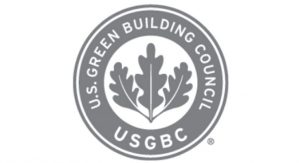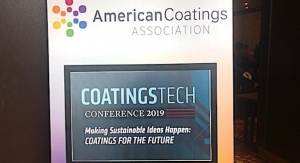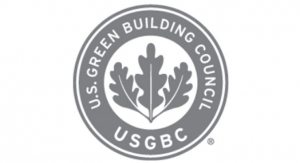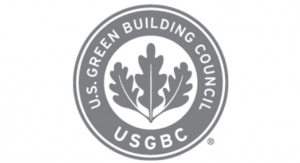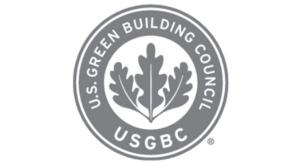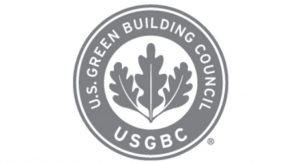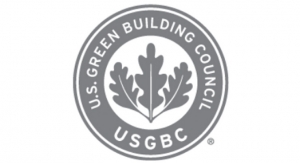05.30.19
On May 22, the New Jersey Paint Council held its second of three legislative sessions this year.
On hand to provide the legislative update was the Chemistry Council of New Jersey’s Director of Government Relations Ed Waters. On hand representing the American Coatings Association was Timothy Wieroniey, specialist, Environmental Health and Safety.
Waters said that legislation was back from a “budget break” – a recess from regular meetings – to focus on budget issues.
There is a continued push for Paint Care, Waters said, adding that the NJPC needs the administration on board before proceeding.
If Paint Care is passed in NJ, it would be the 10th state to do so – and 11th passage overall if you include Washington D.C., Wieroniey noted.
Four counties will save a significant amount of money – around $250,000 per year for Bergen County – if paint is recycled instead of treated as refuse, Waters said.
“We have until early January 2020 to get this done,” he added.
There is also a push to prohibit the sale of paint or coatings removal products that contain methylene chloride in stores; and prohibit the manufacture, sale or promotion of consumer goods products containing microbeads.
Microbeads have been banned in facial scrubs and other products, Waters said.
“The concern, as it’s been express by the ACA, is that it may impact garage floor paints” getting into “waterways,” Waters explained.
According to Waters, PFOA and PFOS are the latest perfluorinated compounds the NJ Department of Environmental Protection is focused on.
“Under rules published in the New Jersey Register, the DEP proposes maximum contaminant levels, or MCLs, of 14 parts per trillion for PFOA and 13 parts per trillion for PFOS,” according to the department’s website.
When it comes to member companies, “Are these numbers feasible?” Waters said.
LEED v4.1 is out and according to the U.S. Green Building Council, it signifies the commitment to “continuous improvement.”
“The supply chain optimization credit was burdensome,” Wieroniey said, regarding the prior certification.
It required a near full supply chain audit, he said, adding that LEED v.4.1 has made it “more navigable.”
Wieroniey also provided a product category rule update regarding powder coatings.
Development is underway with NSF International, he noted.
According to the ACA, NSF International will administer the process and develop an independent PCR review panel.
“It is expected to take approximately 12 months from the start of the kick-off meeting,” Wieroniey said,” and will take into account the appropriate regional and sub-category differences integrated into the approach for the LCA study.”
This is the first factory applied coating category for a PCR, per Wieroniey.
May 31, 2019, is the effective date for Canada’s ban on octhilinone (OIT) as a material preservative in paint.
“ACA members are advised that after that date, finished paints containing OIT preservatives cannot be manufactured and sold in Canada and paints manufactured with OIT preservatives in the U.S. cannot be sold in Canada,” the ACA said.
The ban was announced two years ago. It applies to the sale of all finished paints and coatings that contain OIT.
As per his understanding, it is “to the completion of stocks,” Wieroniey said.
On hand to provide the legislative update was the Chemistry Council of New Jersey’s Director of Government Relations Ed Waters. On hand representing the American Coatings Association was Timothy Wieroniey, specialist, Environmental Health and Safety.
Waters said that legislation was back from a “budget break” – a recess from regular meetings – to focus on budget issues.
There is a continued push for Paint Care, Waters said, adding that the NJPC needs the administration on board before proceeding.
If Paint Care is passed in NJ, it would be the 10th state to do so – and 11th passage overall if you include Washington D.C., Wieroniey noted.
Four counties will save a significant amount of money – around $250,000 per year for Bergen County – if paint is recycled instead of treated as refuse, Waters said.
“We have until early January 2020 to get this done,” he added.
There is also a push to prohibit the sale of paint or coatings removal products that contain methylene chloride in stores; and prohibit the manufacture, sale or promotion of consumer goods products containing microbeads.
Microbeads have been banned in facial scrubs and other products, Waters said.
“The concern, as it’s been express by the ACA, is that it may impact garage floor paints” getting into “waterways,” Waters explained.
According to Waters, PFOA and PFOS are the latest perfluorinated compounds the NJ Department of Environmental Protection is focused on.
“Under rules published in the New Jersey Register, the DEP proposes maximum contaminant levels, or MCLs, of 14 parts per trillion for PFOA and 13 parts per trillion for PFOS,” according to the department’s website.
When it comes to member companies, “Are these numbers feasible?” Waters said.
LEED v4.1 is out and according to the U.S. Green Building Council, it signifies the commitment to “continuous improvement.”
“The supply chain optimization credit was burdensome,” Wieroniey said, regarding the prior certification.
It required a near full supply chain audit, he said, adding that LEED v.4.1 has made it “more navigable.”
Wieroniey also provided a product category rule update regarding powder coatings.
Development is underway with NSF International, he noted.
According to the ACA, NSF International will administer the process and develop an independent PCR review panel.
“It is expected to take approximately 12 months from the start of the kick-off meeting,” Wieroniey said,” and will take into account the appropriate regional and sub-category differences integrated into the approach for the LCA study.”
This is the first factory applied coating category for a PCR, per Wieroniey.
May 31, 2019, is the effective date for Canada’s ban on octhilinone (OIT) as a material preservative in paint.
“ACA members are advised that after that date, finished paints containing OIT preservatives cannot be manufactured and sold in Canada and paints manufactured with OIT preservatives in the U.S. cannot be sold in Canada,” the ACA said.
The ban was announced two years ago. It applies to the sale of all finished paints and coatings that contain OIT.
As per his understanding, it is “to the completion of stocks,” Wieroniey said.


